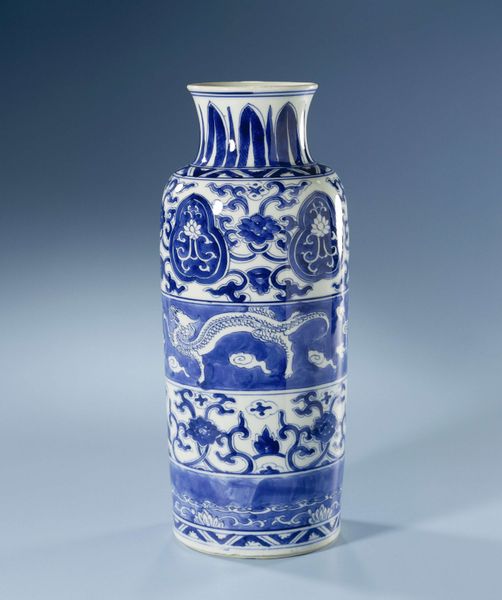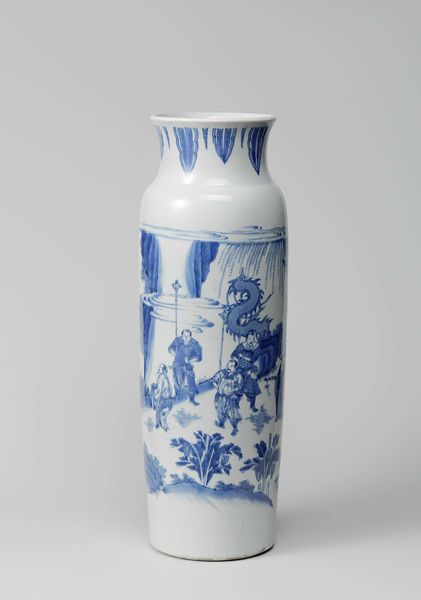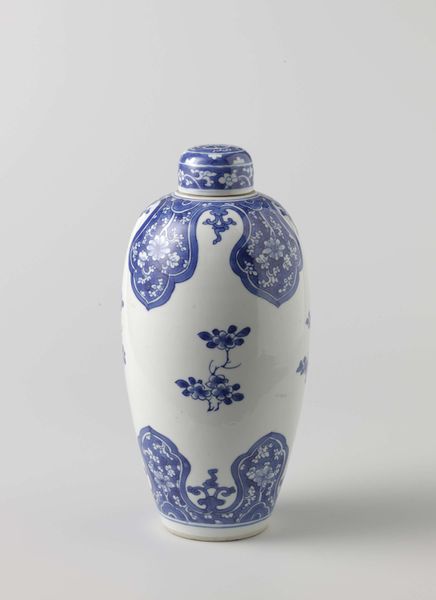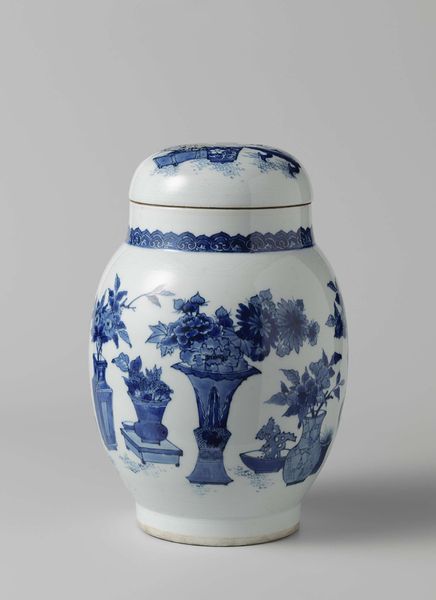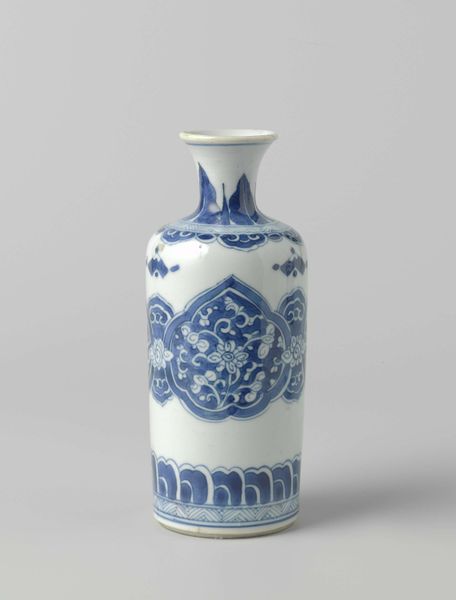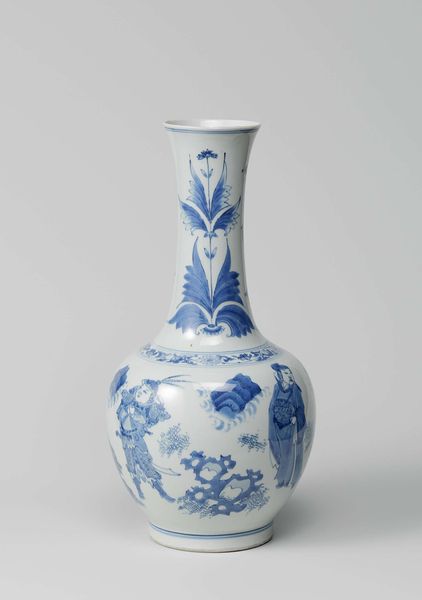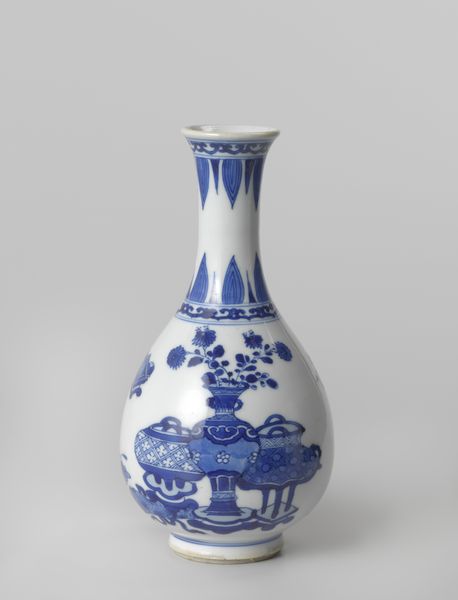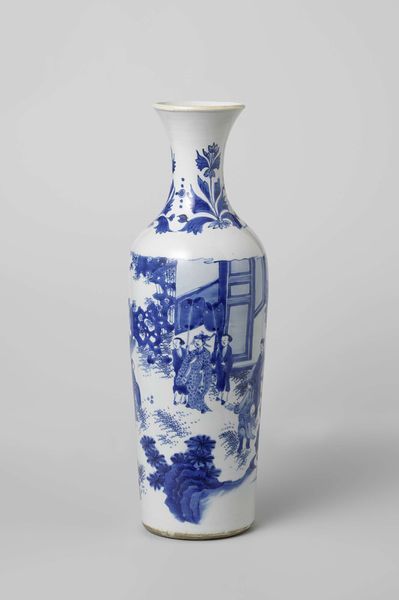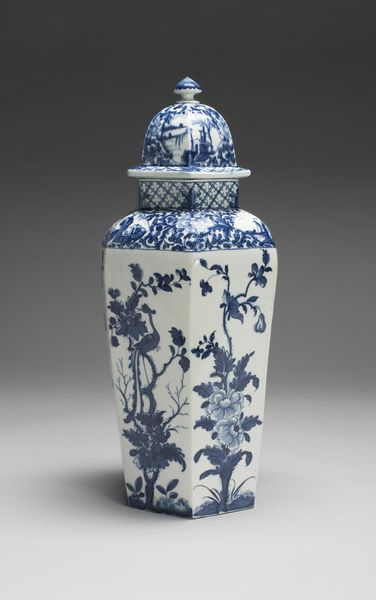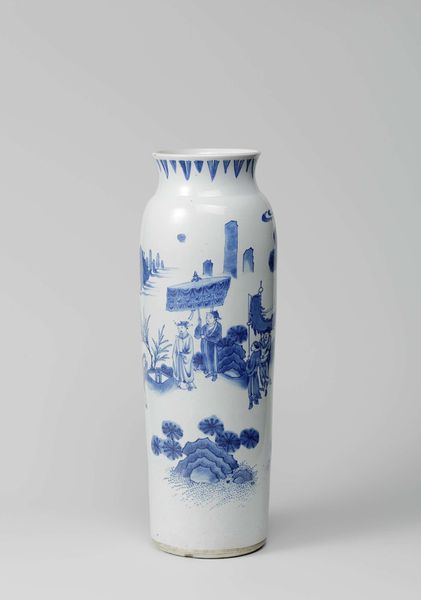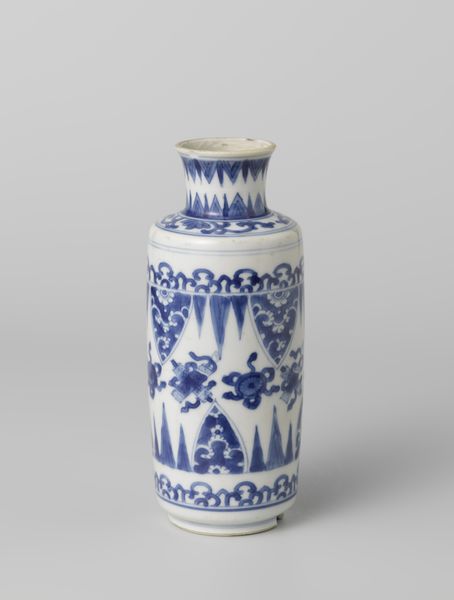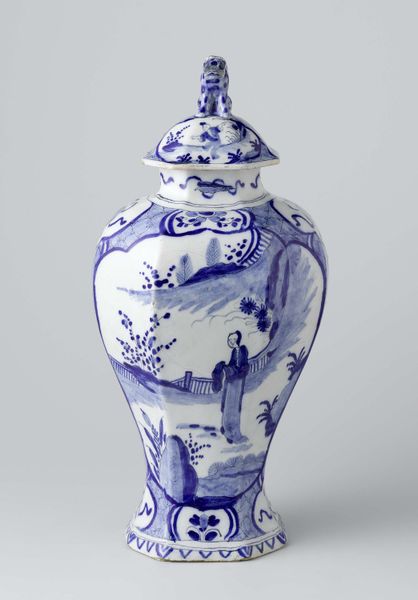
ceramic
#
asian-art
#
landscape
#
ceramic
#
orientalism
#
ceramic
Dimensions: height 27.5 cm, diameter 10.5 cm
Copyright: Rijks Museum: Open Domain
Editor: Today we’re looking at a cylindrical vase, dating back to around 1700. It’s an anonymous piece, made of ceramic and currently residing at the Rijksmuseum. The striking blue and white immediately catch the eye, and I find myself drawn to the dragon motif. What visual elements stand out to you in this work? Curator: The compositional structure immediately presents itself. Note the meticulous division of the vase into distinct registers, each containing a different, yet related, pattern. Observe the strategic use of positive and negative space; how the blue defines forms while the white creates areas of visual rest. The chromatic contrast contributes to an impactful design. Editor: I hadn’t considered the importance of the negative space, especially the way it balances the intricate details of the floral and dragon patterns. It makes each band feel less busy. Are you drawn to certain areas of the vase, and do those parts influence how you relate to the artwork as a whole? Curator: Indeed. Consider how the artist employs the dragon not as a solitary figure, but as a sinuous, decorative element integrated within the repeating pattern. Do you think the materiality—the smooth, cool ceramic—contributes to its visual effect? How might it differ if rendered in another material, such as rough terracotta? Editor: Thinking about it in terracotta gives it a more grounded feel. The smooth ceramic lends itself to a sense of refinement, accentuating the delicate precision of the painted motifs. Curator: Precisely. It's about formal relations and the way different visual properties interact with each other. Editor: Thank you, considering the composition and the importance of negative space has really shifted how I see this piece. Curator: It has helped me refine the way form contributes to its significance.
Comments
No comments
Be the first to comment and join the conversation on the ultimate creative platform.
